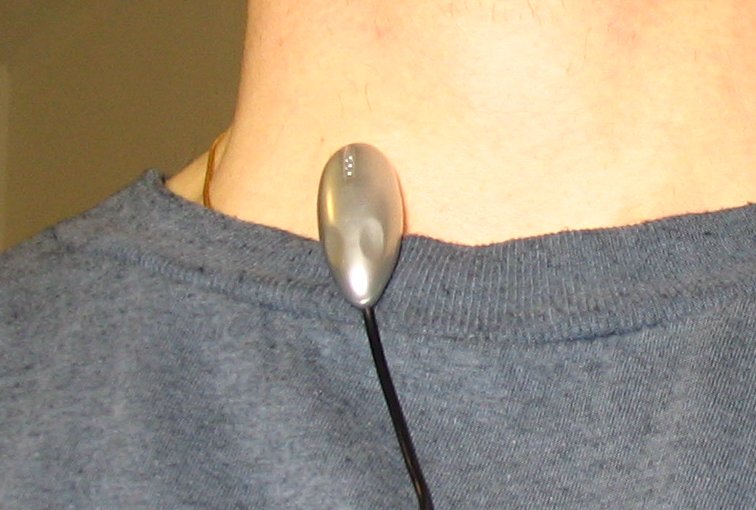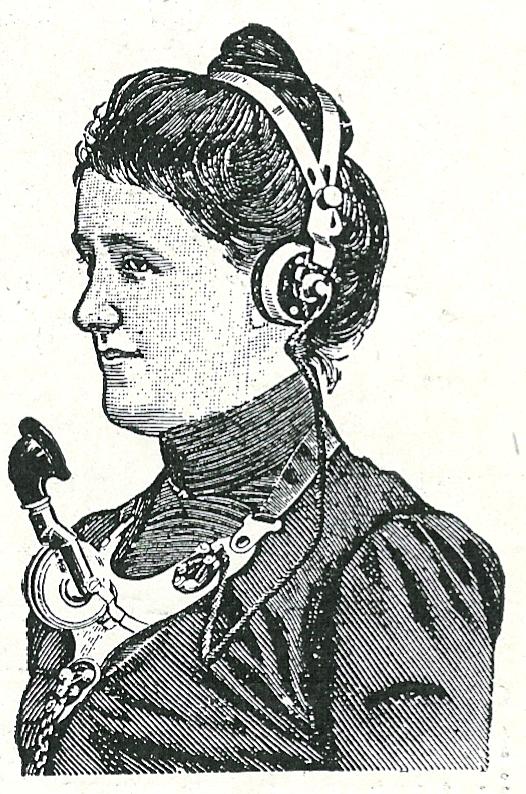Lavaliere microphone on:
[Wikipedia]
[Google]
[Amazon]
 A lavalier microphone or lavalier (also known as a lav, lapel mic, clip mic, body mic, collar mic, neck mic or personal mic) is a small
A lavalier microphone or lavalier (also known as a lav, lapel mic, clip mic, body mic, collar mic, neck mic or personal mic) is a small
 The term '' lavalier'' originally referred to jewelry in the form of a pendant worn around the neck. Its use as the name of a type of microphone originates from the 1930s, when various practical solutions to microphone use involved hanging the microphone from the neck. For instance, a
The term '' lavalier'' originally referred to jewelry in the form of a pendant worn around the neck. Its use as the name of a type of microphone originates from the 1930s, when various practical solutions to microphone use involved hanging the microphone from the neck. For instance, a
 A lavalier microphone or lavalier (also known as a lav, lapel mic, clip mic, body mic, collar mic, neck mic or personal mic) is a small
A lavalier microphone or lavalier (also known as a lav, lapel mic, clip mic, body mic, collar mic, neck mic or personal mic) is a small microphone
A microphone, colloquially called a mic or mike (), is a transducer that converts sound into an electrical signal. Microphones are used in many applications such as telephones, hearing aids, public address systems for concert halls and publ ...
used for television, theater, and public speaking applications to allow hands-free operation. They are most commonly provided with small clips for attaching to collars, ties, or other clothing. The cord may be hidden by clothes and either run to a radio frequency transmitter kept in a pocket or clipped to a belt, or routed directly to the mixer or a recording device.
These miniature microphones are often supplied with a choice of push-on grills of differing lengths that provide gentle high-frequency boost by forming a resonant cavity
A resonator is a device or system that exhibits resonance or resonant behavior. That is, it naturally oscillates with greater amplitude at some frequencies, called resonant frequencies, than at other frequencies. The oscillations in a resonato ...
. A peak of approximately 6 dB at 6–8 kHz is considered beneficial for compensating loss of clarity when chest-mounted, as is a peak of a few decibels at 10–15 kHz when mounted in the hair above the forehead. This method of boosting high frequencies does not worsen noise-performance, as electronic equalization would do.
History
Lapel microphones date from 1932. Various models were made, including ones with condenser diaphragms, ribbons, moving coils, and carbon buttons. The term referred to any small microphone that could be hooked into the buttonhole of the lapel of a coat. The lapel microphone offered freedom of movement.Dictaphone
Dictaphone was an American company founded by Alexander Graham Bell
that produced dictation machines. It is now a division of Nuance Communications, based in Burlington, Massachusetts.
Although the name "Dictaphone" is a trademark, it has ...
microphone could be suspended on a cord around the neck in order to retain some degree of freedom of movement while recording one's voice onto a wax cylinder
Waxes are a diverse class of organic compounds that are lipophilic, malleable solids near ambient temperatures. They include higher alkanes and lipids, typically with melting points above about 40 °C (104 °F), melting to give low ...
in 1941. Telephone operators and air traffic controllers used microphones that rested on the chest and were secured by a strap around the neck. In the 1950s, some microphone models were designed to be hung on a string around the neck. In 1953, Electro-Voice
Electro-Voice (EV) is an American manufacturer of audio equipment, including microphones, amplifiers, and loudspeakers, focused on pro audio applications such as sound reinforcement. As a subdivision of Bosch Communications Systems Inc. since 2 ...
introduced the Model 647A, a small omnidirectional dynamic microphone fitted with a cord to go around the neck. The body of the 647A was lightweight at and relatively small at in diameter and in length. In 1954, Shure Brothers
Shure Incorporated is an American audio products corporation. It was founded by Sidney N. Shure in Chicago, Illinois, in 1925 as a supplier of radio parts kits. The company became a consumer and professional audio-electronics manufacturer of mi ...
offered the larger 530 Slendyne, which could be handheld, mounted on a microphone stand, or worn around the neck on a "lavalier cord."
Mounting techniques
Lavalier microphones are attached differently depending on the nature of their use. In theater applications where the microphone is used to amplify an actor or a singer's voice, lavs are typically concealed in the performer's hair. This placement eliminates the possibility of scratching against their clothing while they move, which would result in the amplification of the scratching sounds as well. It also adds to the suspension of disbelief, since the characters themselves would not be wearing microphones, especially if the plot is set in a time before lavalier microphones existed. Occasionally, specially designed skin-color headsets known as "headworn microphones" are used in stage applications when actors spend a good deal of their performance singing and moving around quickly, such as in stage musicals and in lecture or presentation scenarios. A headworn microphone is essentially a lavalier on a stiff wire mount that loops over the performer's ear. In television and documentary applications, the lavalier will typically be clipped to an article of the subject's clothing, such as a tie, jacket or collar. In narrative motion picture usage, lavs are almost always hidden under clothing. The boom microphone typically sounds "better" and more natural than a lavalier mic and is always a soundperson's first choice; however, for exterior location shooting, it often may be more practical to use a lavalier. One such situation would be during a wide shot that forces the boom operator to keep a distance from the speaker that isn't close enough to achieve a goodsignal-to-noise ratio
Signal-to-noise ratio (SNR or S/N) is a measure used in science and engineering that compares the level of a desired signal to the level of background noise. SNR is defined as the ratio of signal power to the noise power, often expressed in de ...
with the microphone. In that instance, a lav mic hidden on the speaker would achieve better signal-to-noise ratio for recording speech because of its proximity. When lavalier microphones are concealed under clothing, the clothing often scratches against the microphone. To minimize this problem, sound recordists sometimes wrap the head of the microphones in moleskin or place it inside a hollow-centered, column-shaped sponge and place it under a placard, behind a button, or within the knot of a tie.
The transmitter pack to which the microphone is attached may also need to be hidden under a person's clothing. Transmitter pouches are held on with elastic straps and serve to keep the transmitter hidden in various places where clothing provides a non-revealing space, such as high around the waist in the space created at the spine just above the belt line, inside the thigh under a skirt or dress, about the ankles under a pant leg, or even on the inside of a boot.
Academia
In a 1984 study administered by Cornell University's College of Arts and Sciences, it was found that the use of lavalier microphones in an academic setting was beneficial to the dissemination of information. By allowing a presenter to move freely in a presenting space, the lavalier microphone allows the presenter to offer continuous visual stimulation to the audience, enabling the speaker to hold their attention longer or more easily. Even in smaller applications where the audience contained fewer than 25 attendees, the lack of restrictions on the hands proved to offer similar visual stimulation in capturing and maintaining attention.{{Citation needed, reason=The cited reference is not in the journal's database., date=August 2020References